Winners of the 2010 Aga Khan Award for Architecture Announced
By Bustler Editors|
Wednesday, Nov 24, 2010

Related
The five projects selected for the 2010 Aga Khan Award for Architecture were announced today at a prize-giving ceremony held at the Museum of Islamic Art in Doha, Qatar. The five projects selected by the 2010 Master Jury are:
- Wadi Hanifa Wetlands, Riyadh, Saudi Arabia
- Revitalisation of the Hypercentre of Tunis, Tunisia
- Madinat Al-Zahra Museum, Cordoba, Spain
- Ipekyol Textile Factory, Edirne, Turkey
- Bridge School, Xiashi, Fujian, China
At the Award ceremony, the Aga Khan also presented the Chairman’s Award to Professor Oleg Grabar in recognition of his lifetime contribution to the field of Islamic art and architecture. The Chairman’s Award was established to honor achievements that fall outside the scope of the Master Jury’s mandate and is made in recognition of the lifetime achievements of distinguished architects and academics. It has been presented on only three previous occasions.
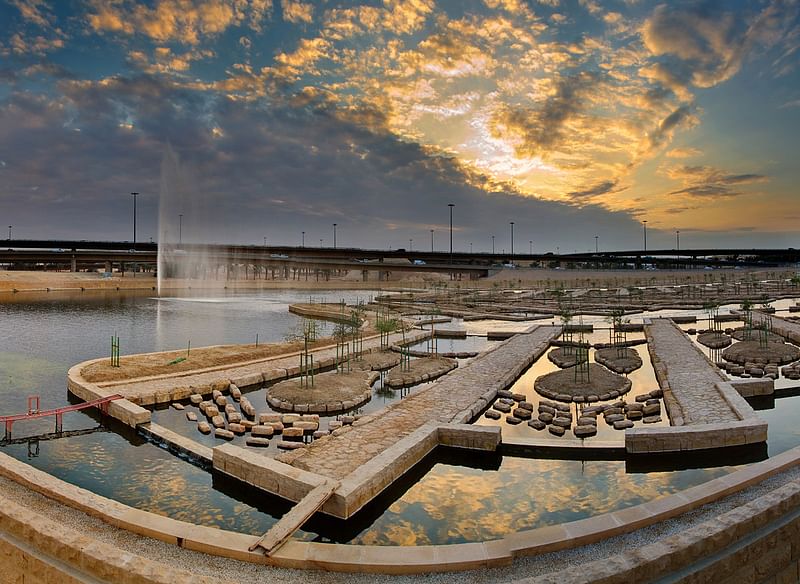
The winning projects were selected by an independent Master Jury from a shortlist of 19 projects announced in May 2010. A total of 401 projects were presented for consideration for the 2010 Award. In their statement, the Master Jury noted that a central concern in making their selection had been the issues of identity and plurality and their intersection in an increasingly globalized world. They emphasized the generous and pluralistic visions reflected through the winning projects, and the transformative roles they have played in the improvement of the quality of the built environment both in places with a majority of Muslims and in societies where Muslims are in a minority.
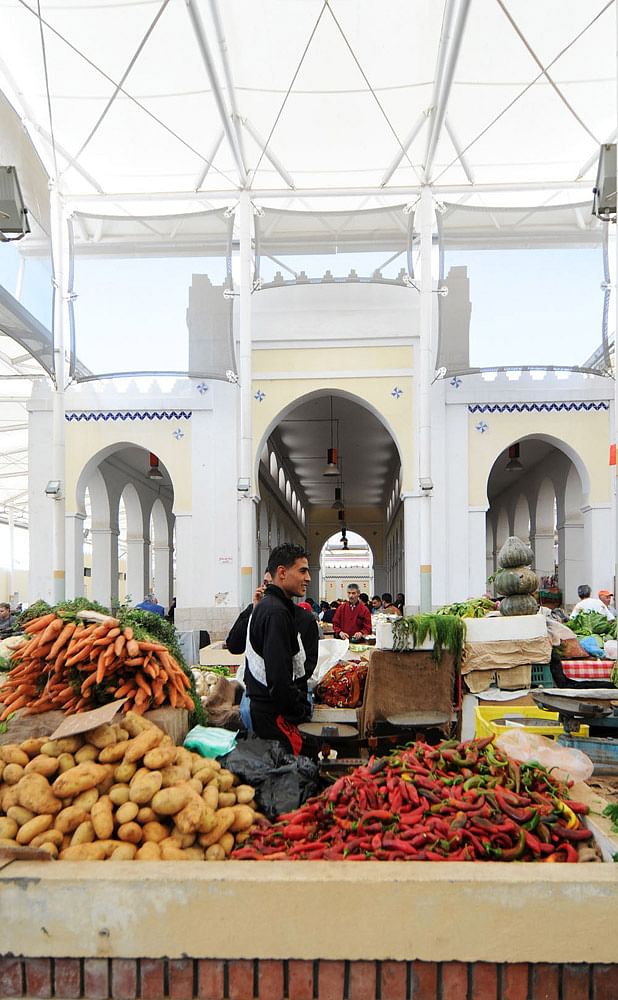
The Awards are selected by an independent Master Jury appointed by the Steering Committee for each three-year Award cycle. The nine members of the 2010 Master Jury are:
- Souleymane Bachir Diagne (Professor, Department of Philosophy, Columbia University, USA)
- Omar Abdulaziz Hallaj (Architect; Chief Executive Officer, Syria Trust for Development, Syria)
- Salah M. Hassan (Art historian and curator; Director, Institute for Comparative Modernities, Cornell University, USA)
- Faryar Javaherian (Architect and curator; co-founder of Gamma Consultants, Iran)
- Anish Kapoor (Artist, UK)
- Kongjian Yu (Landscape architect and urbanist; founder and dean of Graduate School of Landscape Architecture, Peking University, China)
- Jean Nouvel (Architect; founding partner, Ateliers Jean Nouvel, France)
- Alice Rawsthorn (Design critic, International Herald Tribune, UK)
- Basem Al Shihabi (Architect; Managing Partner, Omrania & Associates, Saudi Arabia).
The Aga Khan Award for Architecture was established by the Aga Khan in 1977 to identify and encourage excellence in architecture and other forms of intervention in the built environment of societies where Muslims have a significant presence. The Award is given every three years and recognizes all types of building projects that affect today’s built environment, from modest, small-scale projects to sizable complexes.
Here are the winning projects in detail:
Bridge School
Xiashi, Fujian Province, China
Architect: Li Xiaodong Atelier
Client: Xiashi Village
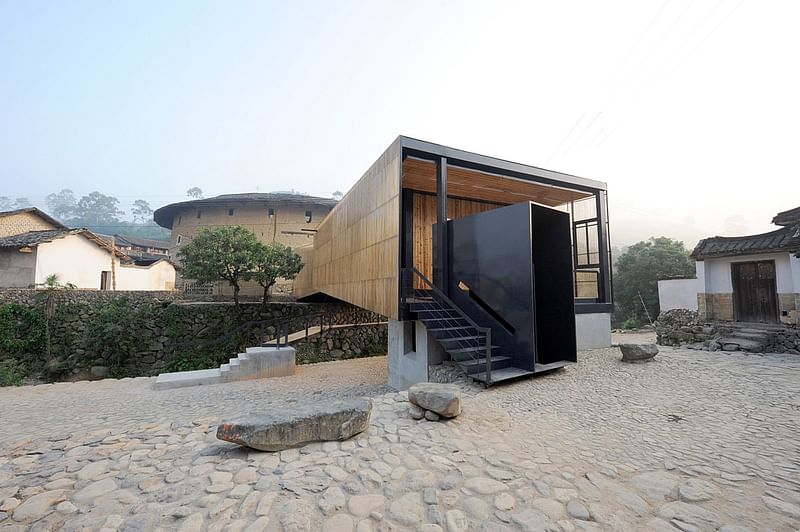
The “Bridge School” bridges the two parts of the small village of Xiashi that lie on either side of a small creek that runs through the village. The structure is created by two steel trusses that span the creek with the space between them housing the functions of the school. Suspended from the structure and running below it is a pedestrian bridge for the people of the village to use. Small and modern in design, with no reference to the area’s traditional building style, the school has nonetheless become the physical and spiritual centre of what was a declining village. Placed in such a way that it addresses its surroundings, the Bridge School connects the village together, providing a central, social space. The broader social aspect of the project was part of the brief, which was developed with the school principal and head of the village to answer community needs rather than simply those of a primary school. A public library separates the two classrooms and the ends of each classroom, or the two ends of the school can be opened up, creating open stages at either end of the building that are integrated with the public spaces outside. The stage at the northern end can be used for performances, with the toulou as a backdrop. The result is a project that has successfully invigorated the entire community, encapsulating social sustainability through architectural intervention.
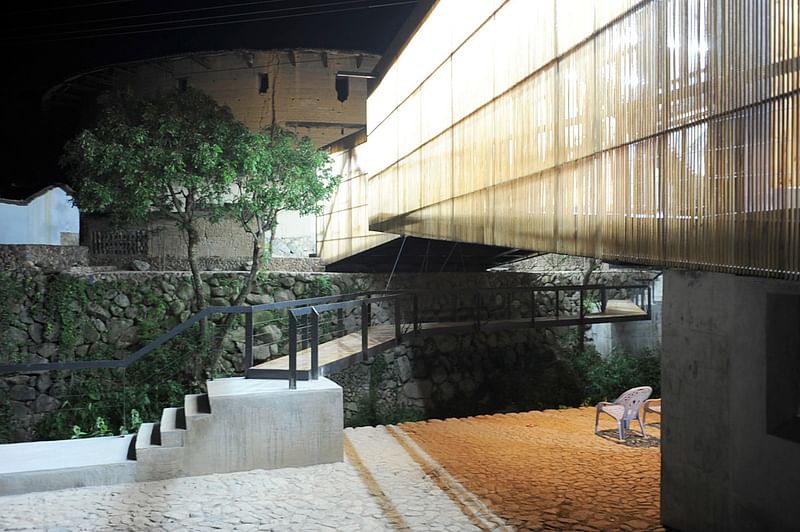
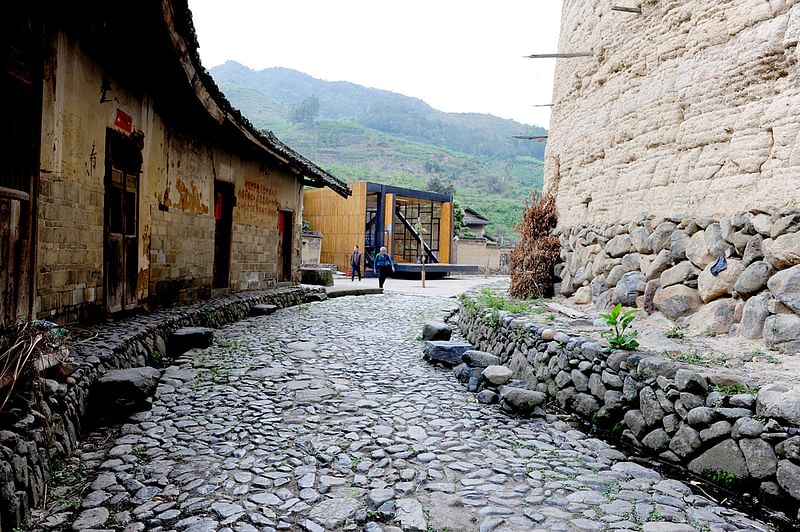


Ipekyol Textile Factory
Edirne, Turkey
Architect: EAA - Emre Arolat Architects
Client: Ipekyol Giyim Sanayi
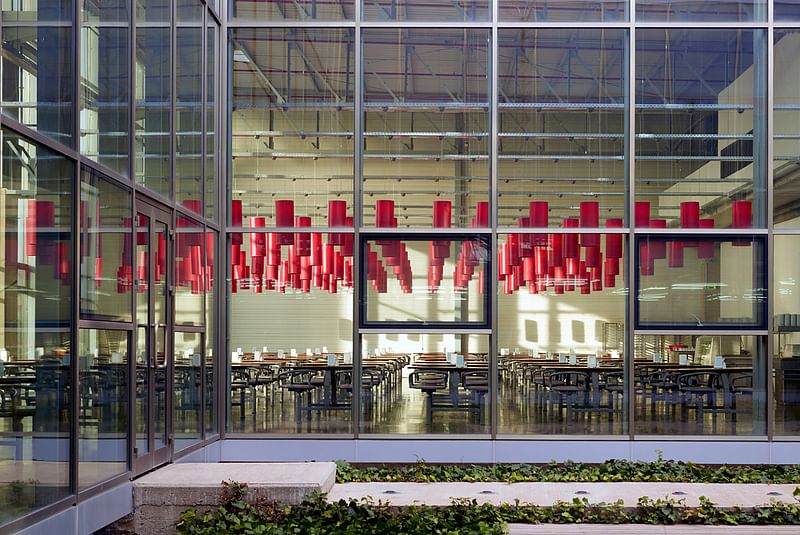
The Ipekyol factory, a custom-designed facility for a manufacturer of high-quality textiles, represents a successful collaboration between a client and an architect in developing a spatial strategy that integrates production goals with the well-being of employees. Key design objectives focused on a single U-shaped volume that makes full use of the site as well as the use of local materials, reduced energy use, and enhanced thermal performance. The architect responded with a single, large structure where administration and production spaces were integrated under one roof, breaking down hierarchies between front- and backof- house functions. The form of the building conveys its function, its U-shape responding to the demands of the production line, from inception to the packaging and dispatch of the garments. The glazed southern facade, five internal courtyards, as well as gardens and light wells give each user access to natural light and views of nature, and the spaces also provide recreational areas for the workers.

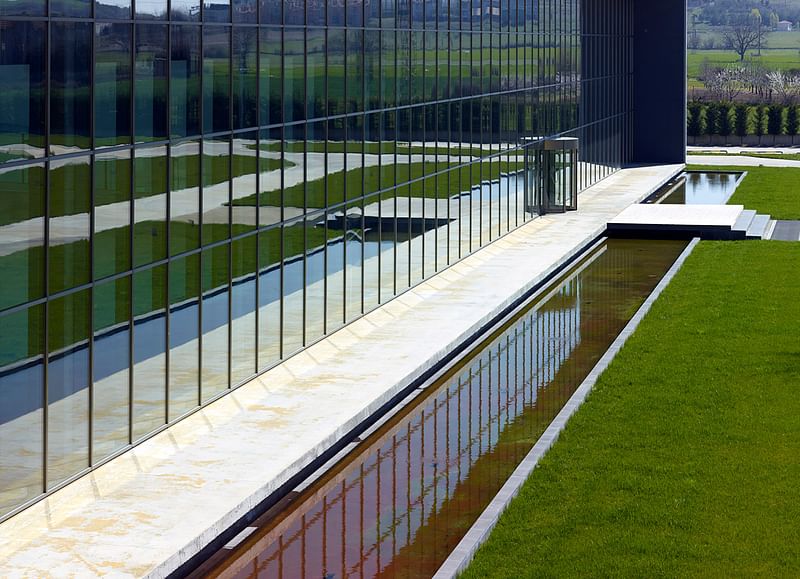

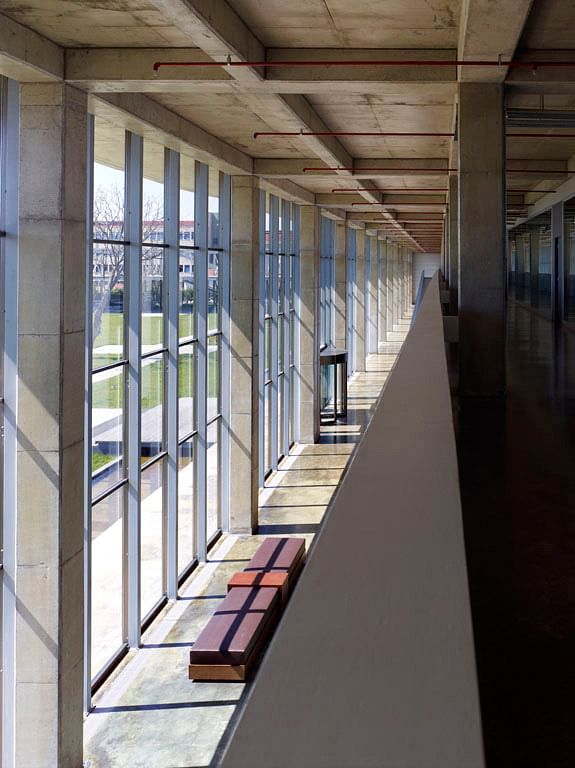
Madinat al-Zahra Museum
Cordoba, Spain
Architect: Nieto Sobejano Arquitectos, Fuensanta Nieto & Enrique Sobejano
Client: Junta de Andalucía, Consejería de Cultura
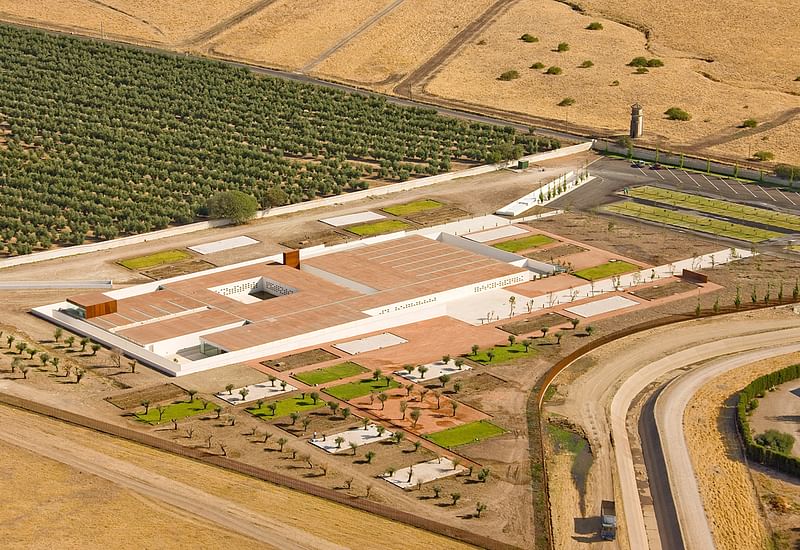
The tenth-century palace city of Madinat al- Zahra is widely considered to be one of the most significant early Islamic archaeological sites in the world, and the most extensive in Western Europe. Excavations at the site are still ongoing. The museum was conceived as a place to interpret the site and display the archaeological findings, as well as to serve as a training and research centre and the headquarters of the archaeological team. A refined and subtle design by the architectural firm Nieto Sobejano, the museum complex blends seamlessly into the site and the surrounding farmland - a series of rectangles composed of walls, patios and plantings which, taken together, seem more like a landscape than a building. The architects took the ground plans of three excavated buildings as a starting point, as though the museum had been waiting to be revealed from the ground. Visitors are guided through a sequence of covered spaces and voids. The main public functions are arranged in a cloister around a broad patio, a form found at the archaeological site and in the old town of Cordoba. Two more courtyards define the research centre and the external exhibition area respectively. A restricted pallet of materials and simple details, with walls of poured concrete, interior walls clad in iroko wood, and limestone paving for the courtyards, are intended to evoke the rough retaining walls and temporary structures of an archaeological site.


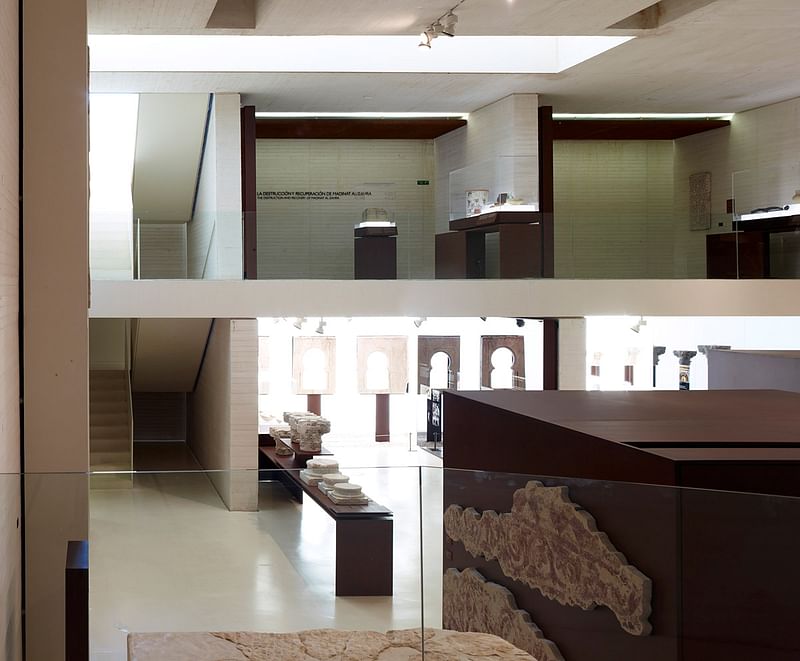
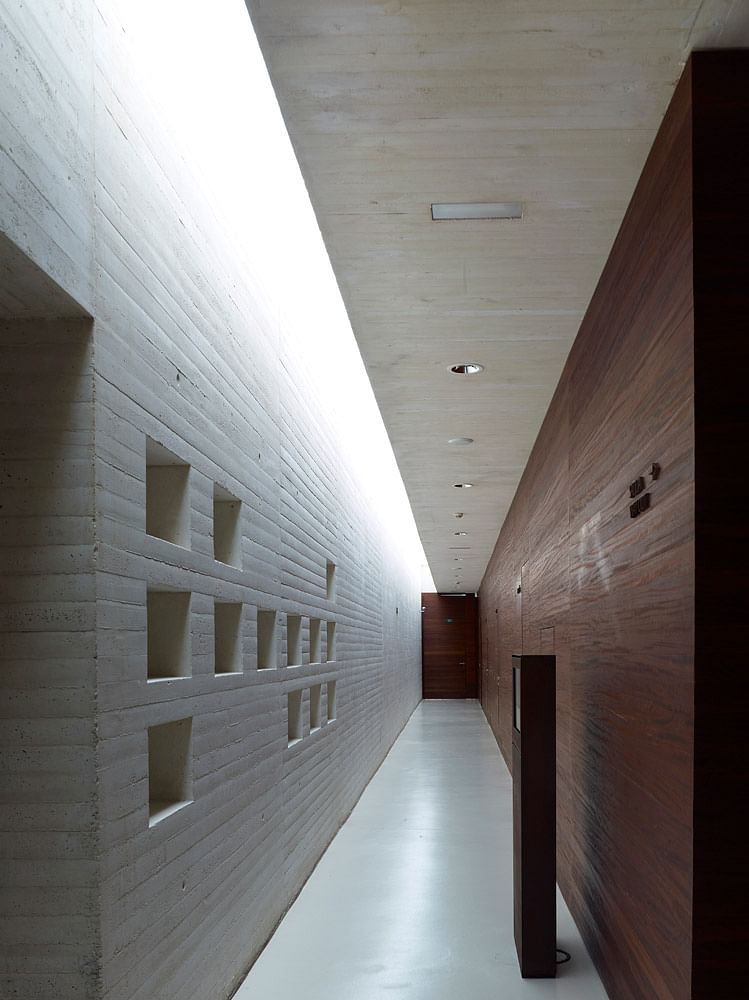
Revitalisation of the Hypercentre of Tunis
Tunis, Tunisia
Architect: Association de Sauvegarde de la Médina de Tunis
Client: Municipality of Tunis
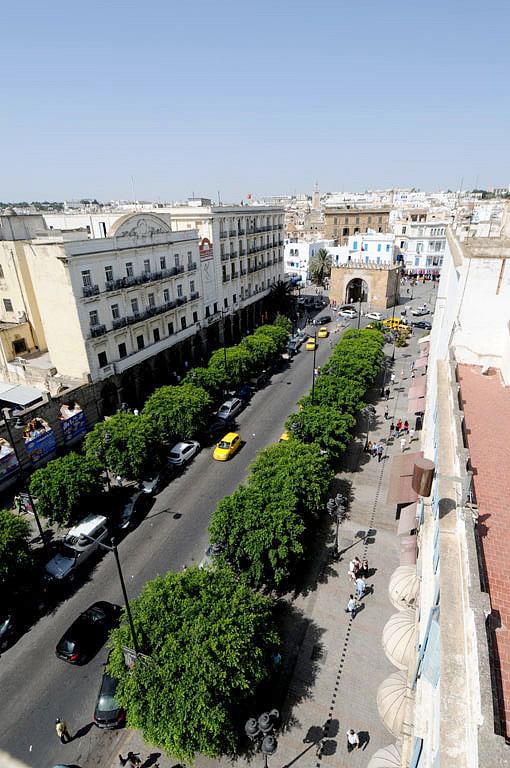
The nineteenth and early twentieth-century architectural heritage of North African cities embodies an important cultural exchange between the southern and northern Mediterranean. This heritage commonly lies adjacent to the old medinas, and has often been neglected in the drive to revitalise the historic centres of cities in this region. The Ville Nouvelle of Tunis, which was built when Tunisia was a French Protectorate, reflected a move from the urban patterns of the old medina to a grid plan that changed the character of the city. The urban revitalisation plan, devised and spearheaded by the Association de Sauvegarde de la Médina de Tunis (ASM), has restructured the public spaces of the area around Avenue Bourguiba and Avenue de France and made them chiefly pedestrian. It has also listed and restored key monuments, such as the Théâtre municipal de Tunis, Marché central, Ancien Tribunal administratif and Cinéma Palace, which are once again in use. The ASM continues to actively guide institutions and individuals in the public and private sectors who wish to undertake preservation projects, in order to ensure overall quality and meet the objectives of the many stakeholders.
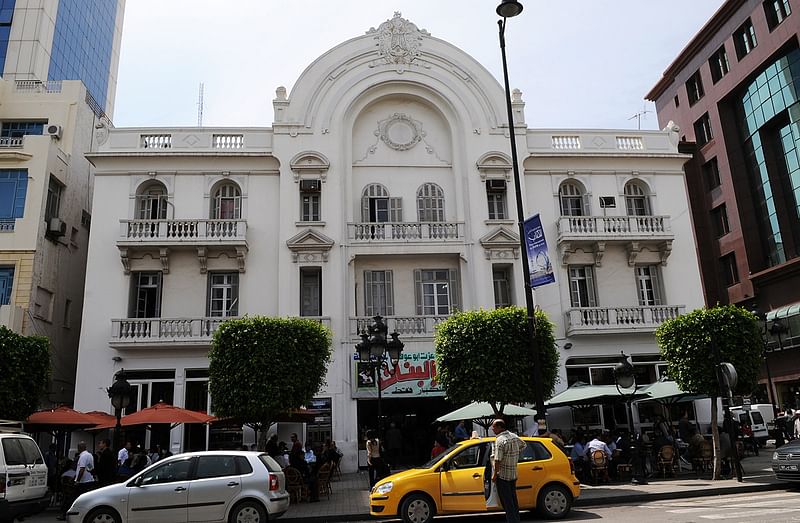
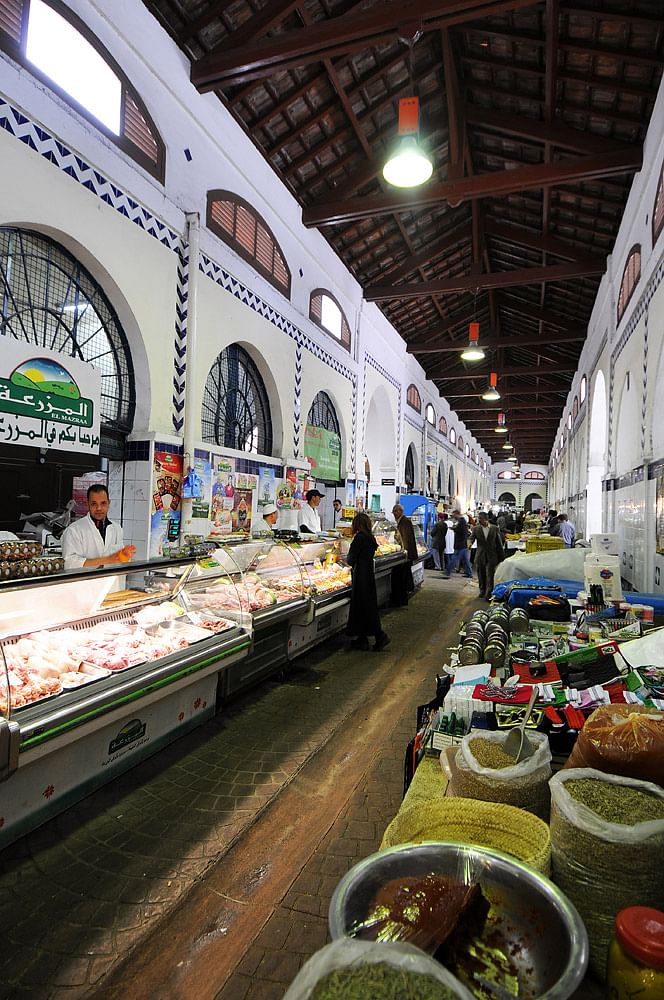


Wadi Hanifa Wetlands
Riyadh, Saudi Arabia
Planners: Moriyama & Teshima Planners Limited & Buro Happold in joint venture
Client: High Commission for the Development of Arriyadh/Arriyadh Development Authority
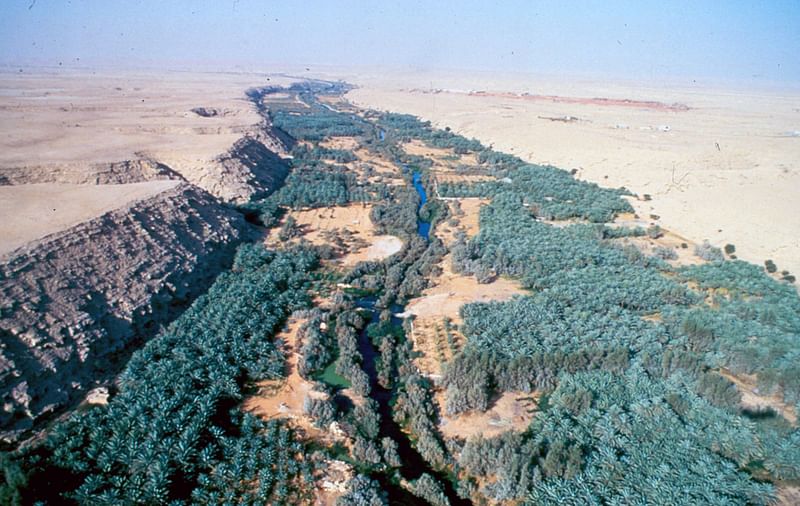
Located in the middle of the Najd Plateau of the Kingdom of Saudi Arabia, the Wadi Hanifa (or Hanifa valley) is the longest and most important valley near Riyadh, a natural water drainage course for an area of over 4,000 square kilometres and a unique geographical feature in this dry region. Until recently, many segments of the valley had been exploited in an aggressive and environmentally destructive manner. In an effort to redress the balance between the resources of the wadi and the people living around it, the Arriyadh Development Authority has implemented a comprehensive development strategy, a programme of works that aims to restore and develop Wadi Hanifa as an environmental, recreational and tourism resource. Project works so far have included the introduction of landscaping, conservation of the natural environment, development of recreational areas for the people of Riyadh, enhancement of agricultural land in the valley, and the creation of an environmentally sensitive wastewater treatment facility that provides additional water resources for the rural and urban inhabitants of the region.


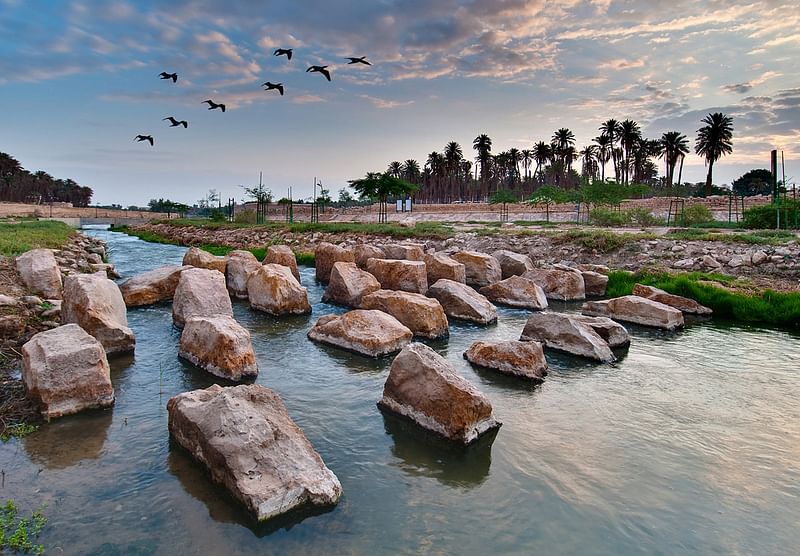


Share
0 Comments
Comment as :